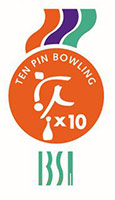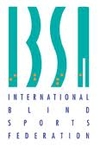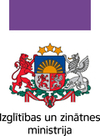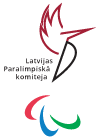
Tenpin Bowling is very popular among the blind. It is played in more than twenty countries throughout the Americas, Asia, Europe and Oceania. There are countless reasons for Tenpin Bowling’s popularity among the blind. First of all, it is a game of recreation which can be enjoyed by the blind and the sighted on an equal basis. Also, it involves stimulating but not strenuous physical activity that can be enjoyed by people of all ages. Further, the mere process of bowling engenders self confidence which usually manifests itself.
Blind bowlers can bowl in any bowling center, the same as sighted bowlers, except most totally blind bowlers need sighted guidance or use a guide rail to help them in their deliveries.
Sighted Guidance
When sighted guidance is being used, blind bowlers are aligned on the approach by sighted assistants before their deliveries. The bowlers would normally be aligned on a spot which they wish to execute their deliveries. Such a reference point may be a certain board on the approach.
Guide Rail
The guide rails used are made of either wood or light-weight tubular medal and can be assembled, disassembled and stored away very easily. They are held in place on the bowling approach by the weight of bowling balls and can be used in any bowling center without damaging the lanes or interfering in any way with the operation of the center’s automatic bowling equipment.
The rails are placed along side the bowling approach and they extend back from the foul line. A bowler who needs the assistance of a guide rail usually slides one hand along its smooth surface while delivering the ball with the other hand. The starting position of the bowler in relation to the guide rail should be carefully noted.
The bowler can determine whether the ball is being released in the center of the lane or near one edge. The rail is positioned to run straight along the first board outside the width of the lane. Of course, bowlers are free to use the bowling technique that they prefer.
A sighted assistant usually is needed to tell a blind bowler which pins have been knocked down or how the remaining pins were missed. These assistants identify the pins either knocked down or left standing by calling the numbered locations of the pins and this information tells a blind bowler where to roll the next ball or how to modify the delivery of the ball the next time to bowl.
Although Tenpin Bowling has been practiced by the blind around the World for more than fifty years, there was no single set of rules to govern the sports. The first step towards this direction was a rule conference organized by the Finish Federation of the Visually Impaired (FFVI) in Helsinki (Finland) in October 1998. Subsequently, two other equally important rule conferences were organized by the Independent Society of the Blind (Singapore) and British Blind Sport (BBS), in Singapore in August 1999 and in Birmingham (United Kingdom) in November 1999, respectively.
While these efforts to device a standardized set of rules to govern the sports were taking place, IBSA was exploring the feasibility of including Tenpin Bowling into the IBSA family’s of sports. Such a decision was taken during its Executive Committee meeting in Noordwijk (Holland) in May 2000. This decision paved the way for the first IBSA General Meeting of the sport to be held in Singapore In December 2000.
There were more than forty participants from eleven countries representing the continents of Asia, Americas, Oceania and Europe, attended the meeting. At the meeting, nominees were put forward to form the technical sub-committee for the sport, and broad goals were outlined for the sub-committee to realize the aspirations of popularizing Tenpin Bowling in all IBSA member nations.









